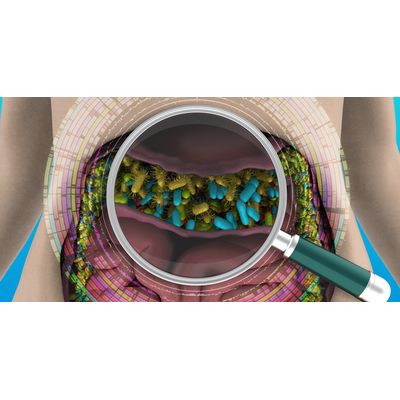

- Home
- Companies
- Creative Proteomics
- Articles
- Human Intestinal Ecosystem Analysis

Human Intestinal Ecosystem Analysis
The gut is a complex ecosystem that contains an extremely large community of microbes known as the gut microbiome. The gut microbiome is made up of bacteria, archaea, viruses, fungi, and other eukaryotic microorganisms, including yeasts, flagellates, ciliates, and protozoa.
The gut microbiota of a healthy individual consists of six phyla (Firmicutes, Bacteroidetes, Proteobacteria, Actinobacteria, Clostridium, and Microflora verrucosa) containing more than 100 species of bacteria and about 200 different bacterial strains. However, 90% of the gut microbiota is predominantly composed of members of Firmicutes and Bacteroidetes. Their relative population size is dynamic, depending on the state of the body (inflammatory bowel disease, diabetes, etc.).
The intestinal microecosystem is rich in various compounds secreted by the host, such as glycoproteins, saliva, gastric juice, bile salts and mucus, and consumes about 1.5 kg of amino acids, short-chain fatty acids and dietary fiber from the daily diet and microbial metabolites. The pH in the large intestine is about 5.7 to 6.8. The gas volume inside is about 100~200 cm3, mainly including carbon dioxide, hydrogen, methane, nitrogen and oxygen, which can meet the growth of anaerobic and aerobic bacteria. The large intestine is composed of intestinal epithelial cells (IECs), which form an intestinal barrier between the microbiota in the intestinal lumen and surrounding tissues. In addition to forming a physical barrier, IECs can also secrete some antibacterial peptides, such as defensins, cytokines and chemokines, including IL8, CCL2, TNF and IL6, etc. These factors can effectively prevent bacteria from entering the intestinal cells. The abundance and diversity of intestinal bacteria increased gradually from the proximal to the distal colon, and reached the peak at the distal end of the colon.
In the long course of human evolution, gut microbiota has also evolved and provided important metabolic pathways for the body, such as those involved in the metabolism of indigestible dietary components and exogenous substances, as well as the production of vitamins and essential amino acids. In addition, the intestinal microecosystem can assist the host to resist the colonization of harmful pathogenic microorganisms and activate the body`s immune system.
In order to obtain information about gut microbiota, researchers have developed a number of research methods, including 16s sequencing, metagenomic sequencing, transcriptome analysis, proteome analysis, and metabolome analysis. These methods can be used to study the species and abundance of microorganisms in the sample, quantify a certain type of microbes in the sample, study the proteome or metabolome changes of intestinal microorganisms under different conditions, and screen the key strains that cause changes in the metabolic state or small molecule of functional metabolism of the microflora.
Currently, the main research directions of intestinal microbiology include:
(1) Explore the difference in intestinal flora between the disease group and the healthy group
(2) Study the intestinal flora of drug or dietary intervention groups
(3) The intestinal flora of the same population and different growth and development periods
(4) Study the intestinal flora of the population during the occurrence and development of a disease
(5) Study microbes in multiple body parts of the same population
